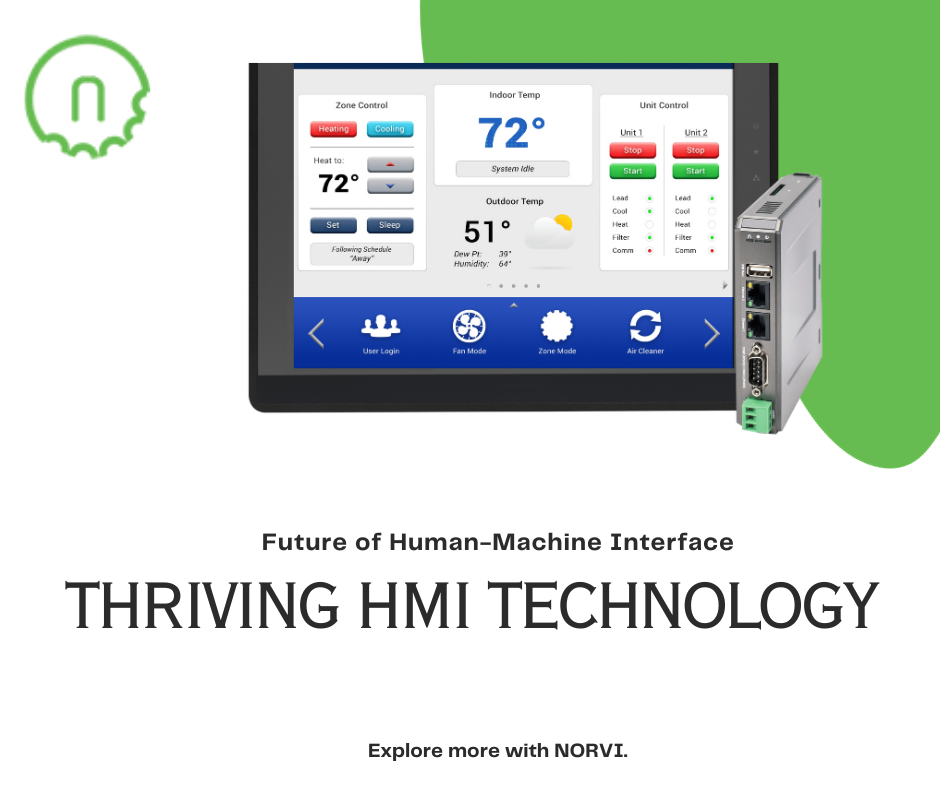
What is HMI? In today’s rapidly advancing technological landscape, the concept of Human-Machine Interface (HMI) has emerged as a critical component. HMI refers to the system or interface that allows humans to interact with machines or software. It plays a pivotal role in various industries, enabling seamless communication and collaboration between humans and technology. To fully comprehend the significance of HMI, it is essential to explore its definition and understand its implications across different fields.
What is HMI Technology and its significance in the technology field?
- HMI is a system or interface that allows humans to interact with machines or software.
- Understanding HMI is important in various industries as it enables seamless interaction and communication between humans and machines, improving efficiency, productivity, and user experience.
Defining HMI Technology
HMI can be defined as the means by which humans interact with machines, devices, or software. It encompasses the design, layout, and functionality of user interfaces that facilitate communication between humans and technology. An intuitive and user-friendly HMI is crucial in ensuring effective and efficient interaction. By providing users with a clear and understandable interface, HMI simplifies complex tasks and enhances user experience.
The Purpose of HMI
At its core, HMI aims to enable seamless interaction and communication between humans and machines. By providing intuitive and user-friendly interfaces, HMI systems enhance efficiency, productivity, and user experience across various industries. In manufacturing, for example, HMI enables operators to monitor and control complex production processes, leading to improved productivity and reduced downtime. In the healthcare industry, HMI facilitates the operation of medical devices, ensuring accurate and timely patient care.
What are the components of HMI?
- Essential components of HMI include display screens, touch panels, keyboards, buttons, and other input/output devices.
- Sensors, actuators, and controllers also play a role in HMI systems.
The components of HMI are diverse and encompass various elements that enable interaction between humans and machines. These include display screens, touch panels, keyboards, buttons, and other input/output devices. Display screens play a vital role in presenting information to users, while touch panels enable tactile interaction. Keyboards and buttons allow users to input commands and navigate through interfaces. Additionally, sensors, actuators, and controllers are integral to HMI systems, as they facilitate the transfer of information between humans and machines.
Types of HMI
HMI encompasses various types of interfaces, each with its own advantages and limitations.
- Touchscreen Interfaces
- Resistive Touchscreens
- Capacitive Touchscreens
- Voice-Activated Interfaces
- Gesture-Based Interfaces
- Brain-Computer Interfaces
One common type is the Graphical User Interface (GUI), which utilizes visual elements such as icons, buttons, and menus to enable interaction. GUIs are prevalent in desktop and mobile applications, providing users with a familiar and intuitive interface. Voice recognition interfaces have also gained popularity, allowing users to interact with devices through speech commands. Gesture-based interfaces, on the other hand, utilize body movements and gestures to control devices. Virtual reality interfaces create immersive experiences, enabling users to interact with virtual environments.
Applications of HMI
HMI finds applications in a wide range of industries, revolutionizing processes and enhancing user experience. In the manufacturing sector, HMI systems play a crucial role in automation and control, enabling operators to monitor and manage production lines. The automotive industry utilizes HMI in vehicles, providing drivers with intuitive interfaces for navigation and entertainment systems. In the aerospace sector, HMI is used in cockpit displays, empowering pilots with crucial information during flights. The healthcare industry benefits from HMI in medical devices, improving patient monitoring and diagnostics. Consumer electronics, such as smartphones and smart home devices, also incorporate HMI to provide users with seamless and intuitive interfaces.
Challenges and Future Trends in HMI
Designing effective HMI systems presents several challenges. One key challenge is managing the complexity of interfaces while maintaining ease of use. HMI systems must strike a balance between providing users with sufficient functionality and avoiding overwhelming them with excessive options. Usability is another crucial aspect, as HMI should cater to a diverse range of users with varying levels of technical proficiency. Additionally, understanding user preferences and incorporating them into HMI design is essential for creating interfaces that resonate with users.
Looking ahead, several future trends are expected to shape the field of HMI. Augmented Reality (AR) holds great potential, allowing users to interact with virtual elements overlaid on the real world. Natural Language Processing (NLP) enables machines to understand and respond to human language, revolutionizing voice recognition interfaces. Machine learning algorithms can enhance HMI by analyzing user behavior and adapting interfaces to individual preferences.
Importance of User-Centered Design in HMI
User-centered design principles play a pivotal role in creating intuitive and user-friendly HMI systems. By prioritizing the needs and preferences of users, designers can ensure interfaces that are intuitive, efficient, and enjoyable to use. User research, usability testing, and iterative design processes are crucial in understanding user expectations and refining HMI interfaces. By involving users throughout the design process, HMI systems can be tailored to meet their specific requirements, ultimately leading to greater user satisfaction and adoption.
Conclusion
In conclusion, the field of Human-Machine Interface (HMI) is revolutionizing the way humans interact with technology. By enabling seamless communication and collaboration between humans and machines, HMI enhances efficiency, productivity, and user experience across various industries. Understanding the components and purpose of HMI, as well as the challenges and future trends, is crucial in harnessing its full potential. With user-centered design principles and powerful HMI platforms, the future holds exciting possibilities for the advancement and application of HMI in diverse fields.
Wait for more exciting news from NORVI, till connect with us:
Facebook : LinkedIn : Twitter
#HMI #HumanMachineInterface #Technology #IntuitiveUserInterfaces #Industries #hmisolutions
